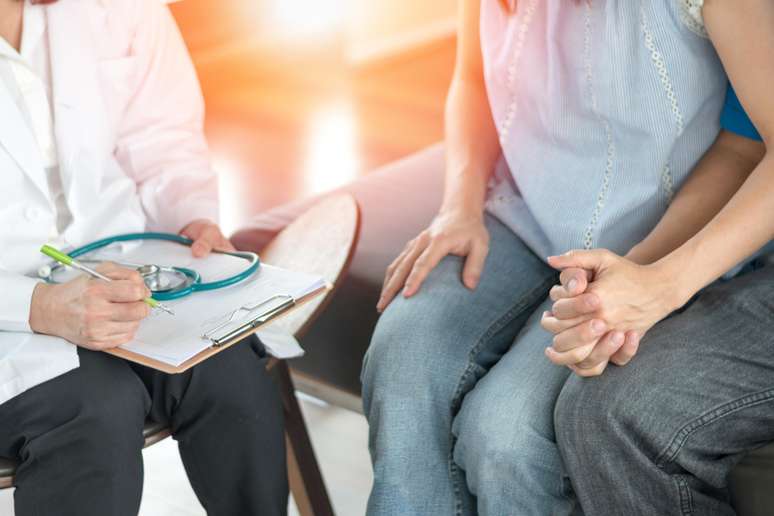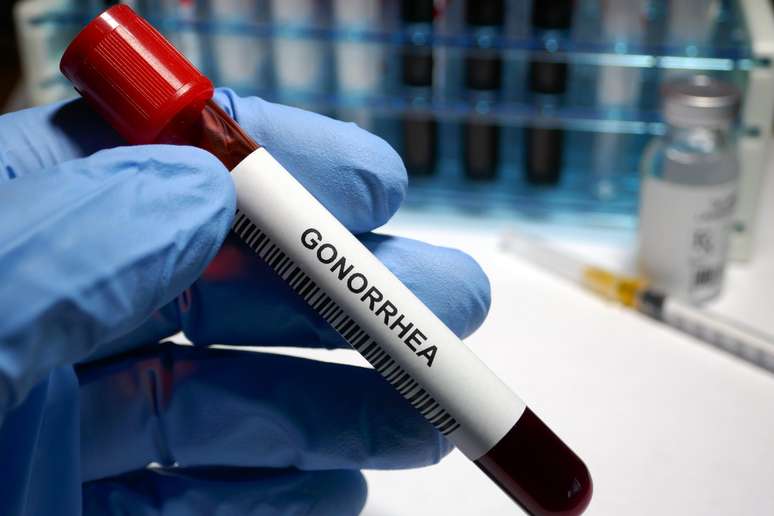Understand the main signs of this sexually transmitted infection (STI), which can affect both men and women.
html[data-range=”xlarge”] figure image img.img-e6a9b2b14366a6d28376a5bad401298bqw41oauo { width: 774px; height: 516px; }HTML[data-range=”large”] figure image img.img-e6a9b2b14366a6d28376a5bad401298bqw41oauo { width: 548px; height: 365px; }HTML[data-range=”small”] figure image img.img-e6a9b2b14366a6d28376a5bad401298bqw41oauo, html[data-range=”medium”] figure image img.img-e6a9b2b14366a6d28376a5bad401298bqw41oauo { width: 564px; height: 376px; }
Gonorrhea, also called blenorrhea, is a sexually transmitted infection (STI) caused by the bacterium Neisseria gonorrhoeae.
This infection affects both men and women and can cause uncomfortable symptoms and serious complications if left untreated and can affect the urethra and cervix as well as the anus and throat.
Although its incidence is not high (1.5 to 2% of the world’s population has the disease), research shows that the young population is most affected by gonorrhea.
The unprepared sexual practice with several partners is considered to explain this fact.
What are the types and symptoms of gonorrhea?

There are two types of gonorrhea: genital and pharyngeal. The genitals are the most common, being transmitted through unprotected sexual contact with an infected person. Pharyngeal gonorrhea is a throat infection caused by the same bacteria, transmitted through oral sex.
Childbirth is another route of contamination, so it is possible for the mother to pass the disease on to the baby in the process. In these cases, the disease primarily affects the eyes, leading to vision loss if left untreated.
The infectologist and coordinator of the Hospital Infection Control Commission of the Vila da Serra Hospital, Cristiano Galvão de Melo, details the argument: “The types of gonorrhea are associated with the place where the contamination occurred. The sexual form of the disease will affect the genital organs while gonococcal pharyngitis, that is, when contamination occurs through oral sex, while ocular gonorrhea is that transmitted by childbirth”.
Symptoms of gonorrhea vary from person to person, with men having more obvious signs of contamination than women. “After the incubation period, the disease manifests itself mainly through the secretion in the urethra or anus,” explains Dr. Leandro Curi, infectologist at the Felício Rocho hospital.
Some of the more common symptoms are:
- Itching and secretion in the private parts;
- Bleeding from the anus;
- Pain during intercourse;
- Sore throat;
- Difficulty swallowing;
- Infectious arthritis, loss of mobility and joint discomfort.
- Fever.
Symptoms of female gonorrhea
Although the disease affects men and women equally, women are usually the most affected, as diagnosis is difficult to make.
Consult a doctor if you experience yellowish or greenish vaginal discharge, pain or burning when urinating, bleeding outside the menstrual period, abdominal and pelvic pain during intercourse, or itching or burning sensation in the genital region.
Symptoms of male gonorrhea
Among men, the most common symptoms are: yellowish or greenish discharge in the urethra, pain or burning when urinating, pain or swelling in the testicles, itching or burning sensation in the penis, and bleeding from the urethra.
How to prevent gonorrhea
The most effective way to prevent the disease is to use condoms every time you have sex, as well as get tested regularly for STDs and seek treatment as soon as possible. Pregnant women should receive regular prenatal care to avoid passing the disease to their baby.
Interestingly, most people infected with gonorrhea can also be diagnosed with chlamydia. One more reason that supports the periodicity of the exams.
Disease diagnosis

Gonorrhea can be diagnosed by analyzing the patient’s symptoms and laboratory test results. You can seek out a general practitioner, urologist, gynecologist or infectious disease specialist to evaluate your condition.
What is the treatment for gonorrhea?
It is possible to treat the disease through the use of antibiotics such as ceftriaxone and azithromycin. It is important that all sexual partners of the infected person are also tested and treated to prevent transmission of the disease.
In some cases, gonorrhea can become resistant to antibiotics, which makes treatment more difficult. Therefore, it is essential to seek help as soon as possible. “The gonorrhea bacterium is indeed acquiring resistance. In some countries, mainly in Europe, what they call ‘supergonorrhea’ has already been detected. We have not yet reported any cases here in Brazil, but it is something that worries us because, year later, the case numbers of this resistant bacterium are on the rise,” says infection specialist Cristiano Galvão.
The cure time of the disease can be less than 7 days. However, a new contamination can occur, which is why it is important to always perform sexual acts protected by a condom.
Source: Terra
Ben Stock is a lifestyle journalist and author at Gossipify. He writes about topics such as health, wellness, travel, food and home decor. He provides practical advice and inspiration to improve well-being, keeps readers up to date with latest lifestyle news and trends, known for his engaging writing style, in-depth analysis and unique perspectives.






![It All Begins Here: What’s in store for Monday 27th October 2025 Episode 1293 [SPOILERS] It All Begins Here: What’s in store for Monday 27th October 2025 Episode 1293 [SPOILERS]](https://fr.web.img6.acsta.net/img/41/39/413989e0bd493a6d9c6b47c276d6bcf1.jpg)

